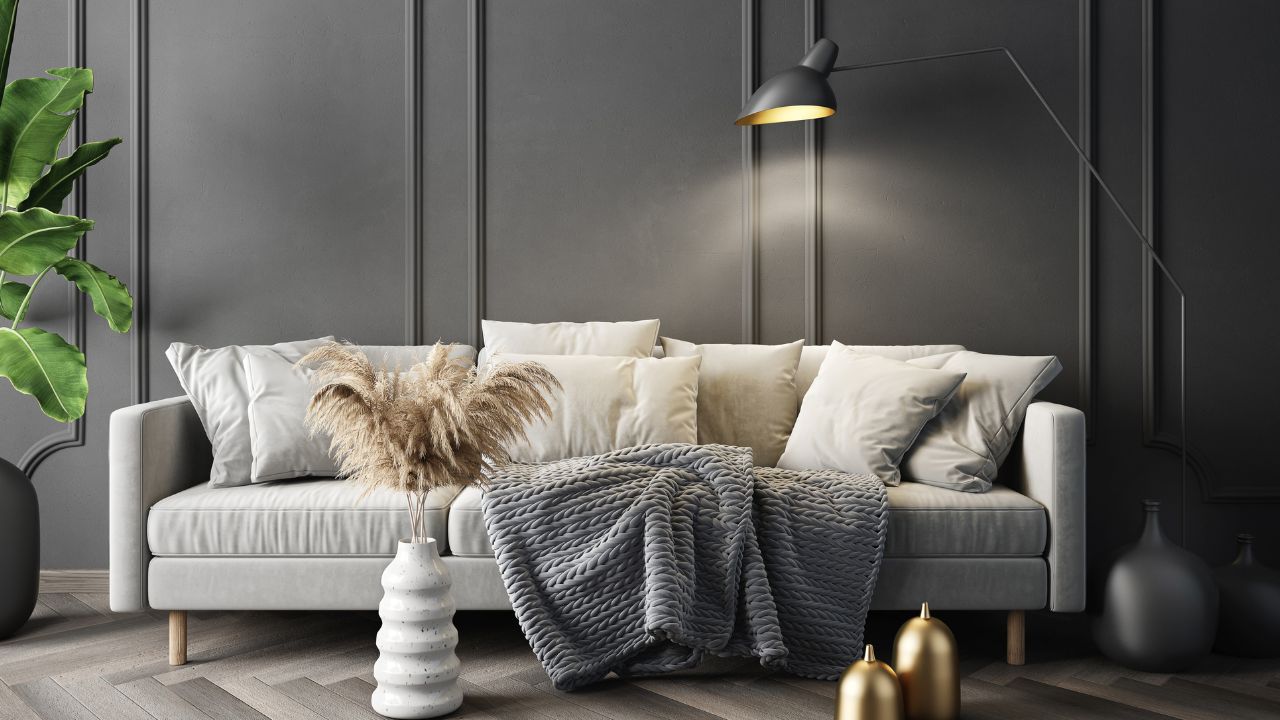Adding the perfect lighting with contemporary furniture designs is an art that allows for beauty, functionality, and ambiance to meld together harmoniously.
A good design balance between lighting, furniture, and the color scheme can transform that space into something cozy, stylish, and functional. Here are some important principles and ideas to help you along the way to this perfect mix of lighting with modern furniture. If you want some lighting fixtures or furniture pieces, Shop More from Homebaa now!
The Role of Lighting in Contemporary Design
Lighting is both a functional need and a key design element that gives form to your space. Lighting, when brought together thoughtfully with modern fixtures, innovative materials, and clean lines, will co-meld with designer furniture to establish an atmosphere. The right lighting schemes can elevate furniture pieces in various ways and set the mood you want, depending on whether you use brushed pendants, minimal sconces, or advanced LED systems. To achieve this, consider the following roles of lighting:
- Highlighting Key Features: Use accent lighting, such as spotlights or wall-mounted fixtures, to draw attention to statement furniture pieces.
- Enhancing Functionality: Ensure that task lighting, like desk lamps or pendant lights, complements workspaces and seating arrangements.
- Creating Ambiance: Leverage ambient lighting, such as recessed lights or LED strips, to establish a cohesive and inviting atmosphere.
Types of Lighting and Their Impact
To incorporate perfect lighting with contemporary furniture, it is essential to understand different types of lighting and their applications:
Ambient Lighting
Ambient lighting is the primary means of illumination and sets the base for creating a modern space. Ceiling-mounted fixtures, sleek recessed lights, and contemporary LED panels provide consistent brightness. Select neutral to warm light tones to complement contemporary furniture while keeping the overall look clean and uncluttered. You can also add dimmers to control lighting.
Task Lighting
Strategic task lighting enhances functionality while contributing to the overall design scheme. Table lamps, floor lamps, and under-cabinet lights featuring metallic finishes or bold geometric designs serve specific activities like reading, working, or cooking. Position these fixtures to eliminate shadows and reduce eye strain while maintaining style consistency.
Accent Lighting
Well-placed accent lighting creates visual interest and depth by highlighting architectural features, artwork, or statement furniture pieces. Track lights, wall sconces, and uplights offer precise illumination control. Adjustable fixtures provide flexibility for different furniture arrangements or seasonal décor changes, allowing you to refresh your space's ambiance easily.
Decorative Lighting
Statement lighting fixtures serve dual purposes as functional light sources and artistic focal points. Modern chandeliers, pendant lights, and sculptural fixtures featuring clean lines, glass elements, or metallic finishes become conversation pieces. These decorative elements should complement your existing design elements while adding visual interest to the overall space.
Choose contemporary designs featuring clean lines, glass, or metal for seamless integration with furniture.
Strategies for Harmonizing Lighting and Furniture
Complement Furniture Shapes and Materials: Pick your lighting fixtures that coincide with your furniture style. For example, frosted or clear glass pendants can be used to pair glass-topped tables to achieve a consistent feel. Metallic finishes in furniture can be used to match the look of metal-framed lighting fixtures.
Layer Lighting: Create visual interest by blending ambient, task, and accent lighting while ensuring no single light source dominates. This balanced approach adds layers of illumination while keeping the focus on your furniture and décor.
Incorporate Smart Lighting: With smart lighting systems, you can choose your lights’ brightness and temperature as well as your hues in order to match whatever look and feel you want to picture your furniture in. Programmable settings can create different scenes, such as cozy evenings or vibrant gatherings, enhancing the room’s functionality and design.
Focus on Proportions: Ensure that the size of your lighting fixtures aligns with the proportions of your furniture and room. Oversized lights can overwhelm smaller furniture, while understated fixtures might get lost in spacious areas.
Consider Color Temperature: The lighting you choose should also match the room’s color palette. A warm lighting illuminates comfortably where cool lighting draws attention to cery modern and minimalist decor.
Practical Examples
- Living Room: Pair a sleek sectional sofa with a large, geometric pendant light for a striking centerpiece. Add floor lamps with clean lines to enhance reading areas.
- Dining Area: Use a linear chandelier or multiple pendant lights above a minimalist dining table to create visual interest.
- Bedroom: Use recessed ambient lighting combined with bedside lamps with more contemporary designs to create a cohesive look.
Conclusion
Perfect planning and an eye for detail are essential for incorporating perfect lighting with contemporary furniture designs. Thoughtful lighting helps incorporate your furniture and creates a functional ambiance simultaneously. This is possible by integrating multiple lighting types and modern technology into a residential space that is not just pragmatic but also aesthetically pleasing.


